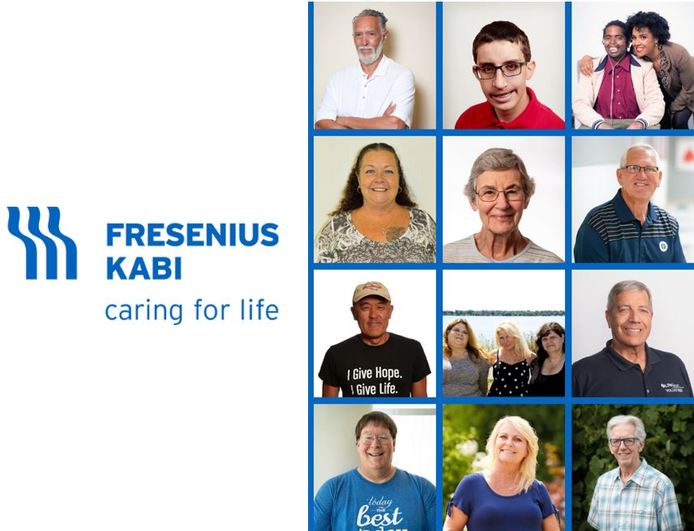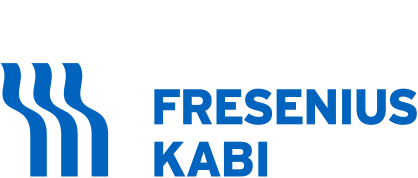Fresenius Kabi Announces 2019 Inductees to Blood Donation Hall of Fame
15 individuals recognized for their commitment to “caring for life” through blood donation and volunteerism
October 30, 2019

LAKE ZURICH, Ill., October 30, 2019 – Fresenius Kabi announced today it has inducted 15 people into the 2019 Fresenius Kabi Blood Donation Hall of Fame. For more than 20 years, Fresenius Kabi has partnered with blood centers through a nationwide program that recognizes and shares the stories of individuals who demonstrate commitment and passion for donating blood and raising awareness of the need for blood donation.
U.S. patients require an estimated 36,000 units of red blood cells each day to treat a multitude of serious medical conditions including cancer, organ transplants or following an accident or trauma. It is estimated that every two seconds someone in the U.S. requires blood. Blood donors and volunteers play a critical role in sustaining the nation’s blood supply, providing patients across the country with lifesaving resources and care.
“The U.S. blood supply is dependent on the commitment of a compassionate community of recruiters, sponsors, donors, collectors, technicians, scientists and drivers. Fresenius Kabi works shoulder-to-shoulder with blood centers in the U.S. to assure that blood is available to patients in need,” said Dean Gregory, president, global commercial operations, Transfusion Medicine and Cell Therapies Division at Fresenius Kabi. “This year’s class of Fresenius Kabi Donation Hall of Fame inductees is a wonderful example of heroes working in support of our communities. Fresenius Kabi is honored to recognize them.”
Below is background on this year’s inductees and why they were recognized:
- Adair E. Andrew is a donor and volunteer at the American Red Cross in Asheville, North Carolina. He is frequently found in the donor chair and was most recently recognized for having donated more than 700 times. Andrew reminds us all just how much we can do to help those in need in our communities.
- Dexter Emoto, donor, recruiter and donation organizer at LifeStream Blood Bank in San Bernardino, California., is a registered nurse and specializes in post-anesthesia care and recovery, where he sees first-hand the need for blood. For more than 40 years, Emoto has regularly donated blood and plans to continue for as long as he is fit to do so. In 2018, he began organizing and recruiting for blood drives on the Loma Linda campus.
- Theodore Hale, 19, has already banked 30 donations towards his lifetime goal of 1,000 at the Community Blood Center in Dayton, Ohio. Hale was inspired to donate platelets by his mentor Glenn Stoops, a longtime donor. Getting to that first donation, though, wasn’t easy. Hale wanted to donate as soon as he turned 16, but he was turned away. “I kept getting deferred. Weight, blood pressure, I think it was 10 times,” he says. But he never gave up on his chance to save lives.
- Peter Hall donates at the American Red Cross Josephson Blood Donor Center in Mobile, Alabama. Since 1986, he has donated blood, and three years ago, when asked if he would like to try making a platelet donation, he was more than happy to spend the extra time providing this lifesaving gift. Since then, the retired teacher has become a dedicated platelet donor and given more than 233 units.
- Sarah Hansgate, Jillian Truesdale, and Dawn Wolf had each been donating platelets for several years at ConnectLife in Williamsville, New York. It was in the hours they were seated next to each other while donating that their commonalities blossomed into deep friendship. Today these donor buddies can be found lined up in a row, laughing the time away as they share the latest stories of their daily lives—and the gift of their platelets. Ms. Hansgate, Ms. Truesdale and Ms. Wolf represent what giving back is all about.
- Sister Damien Hinderer's calling for blood donation has been centered in her faith. She has been donating twice a month for close to 60 years, most recently at Hoxworth Blood Center in Cincinnati, Ohio. In 1960, she made her first donation to help a sister in need of blood. She donates triple platelets every visit, which equates to 72 lifesaving units of platelets a year. Just recently, Sister Damien was recognized for reaching the 80-gallon donation mark.
- James (Jim) R. Kuhlmann, who gives at the Donor Center at Roswell, New York, began his journey as a blood donor in 1970 when he attended a blood drive in place of his father, who was unable to attend. That began a nearly 50-year streak of donating platelets. In April 2017, Kuhlmann qualified for the Guinness World Records and is the current record holder in the category of most donated blood-apheresis (platelets). “Being the world record holder is exciting, but what’s really important is knowing I’m able to help patients in need,” he says.
- Dawn Marisch suffered an aneurysm in 2011 and received a remarkable 90 units of blood, platelets and plasma throughout her treatment. “It was very humbling to realize how many people—how many everyday heroes—it took to save my life,” Marisch said. Now a blood donor herself at Versiti in Milwaukee, Wisconsin, Ms. Marisch is grateful for her chance to save others. As an O-negative donor—the universal blood type used in emergencies like the one she experienced—Marisch understands the impact of just one donation, not just for patients, but for their families as well.
- Steve Pringle, an army veteran, found a new way to serve during his retirement—as a blood donor and center volunteer at LifeServe Blood Center in Des Moines, Iowa. Pringle knew first-hand the importance of blood donation from his tours in Vietnam. He happily donates whatever blood component is needed most on any given day. He’s donated more than 63 gallons, according to LifeServe in Des Moines. He’s also logged 4,000 volunteer hours at the center, more than anyone else in the organization during his tenure, touching almost every department with his generosity.
- Jamie Stembridge of OneBlood in Tampa, Florida, was a committee member of the non-profit Hooked on Hope, which helps breast cancer patients with financial issues during treatment, when she heard about Natalie, a local patient in need of platelets. She became a directed donor, and when she learned that Natalie would need more than she could give, she turned to social media. Her plea inspired more than 70 directed donations. With all their generosity, and a successful bone marrow transplant, Natalie was soon able to make her own platelets. And the enthusiasm Ms. Stembridge inspired has continued—the donors she brought in for Natalie still support the center today.
- Marqus and Ashley Valentine, a brother-sister duo, are making a difference for people with sickle cell disease through their not-for-profit organization, Sick Cells. Diagnosed with sickle cell anemia at 6 months old, Marqus Valentine spent countless weeks of his childhood in the hospital. Doctors said he might not live past 10 years of age. Today he is 36, thanks to blood donations and the assistance of friends and family. His younger sister, Ashley, who spent her early years in hospital playrooms while her brother recovered, saw first-hand how few resources were available to people with sickle cell. Using the power of film and storytelling, Sick Cells highlights the disparities around sickle cell through personal experiences.
- When Scott Zechiel, who donates at City of Hope Donor Center in Duarte, California, was 16 he was raced to the hospital for an emergency appendectomy. During the procedure he lost so much blood, he needed six transfusions. He’s now a passionate blood donor and has made 332 donations so far. And he’s gone one step further, registering with the “Be the Match” registry for potential bone marrow donors. He tells everybody that he lives for his donation days, “because I just enjoy them so much.”
About the need for blood and blood donation
According to the American Red Cross, one accident victim may need up to 100 units of red blood cells. Nearly 7,000 units of platelets and 10,000 units of plasma are needed daily and nearly 21 million blood components are transfused each year in the U.S.
When donating blood, people give a pint of whole blood or donate a specific blood component via an automated system. With whole blood, further processing is required to separate the unit into its therapeutic components—typically red blood cells, platelets and plasma. When donating on an automated system, donors typically give the same amount of blood, but more of the component that is in highest demand depending on their donor characteristics and blood type. A total of 30 million blood components are transfused annually in the U.S. To make a blood donation or to learn more about donating blood, please contact your local blood center.
Nominations for 2020 class accepted through June 14, 2020
Fresenius Kabi invites nominations of blood donors or other individuals who have demonstrated a commitment and passion for donating blood or encouraging blood donation. Anyone can submit a nomination and there is no limit to the number of nominations per blood center. A person may only be inducted into the Fresenius Kabi Donation Hall of Fame once.
Nominations for the 2020 Fresenius Kabi Donation Hall of Fame are due by June 14, 2020. Submit your nomination online at: www.fresenius-kabi.com/us/company/donation-hall-of-fame.
About Fresenius Kabi
Fresenius Kabi (www.fresenius-kabi.com/us) is a global health care company that specializes in medicines and technologies for infusion, transfusion and clinical nutrition. The company’s products and services are used to help care for critically and chronically ill patients. The company’s U.S. headquarters is in Lake Zurich, Illinois. The company’s global headquarters is in Bad Homburg, Germany.
